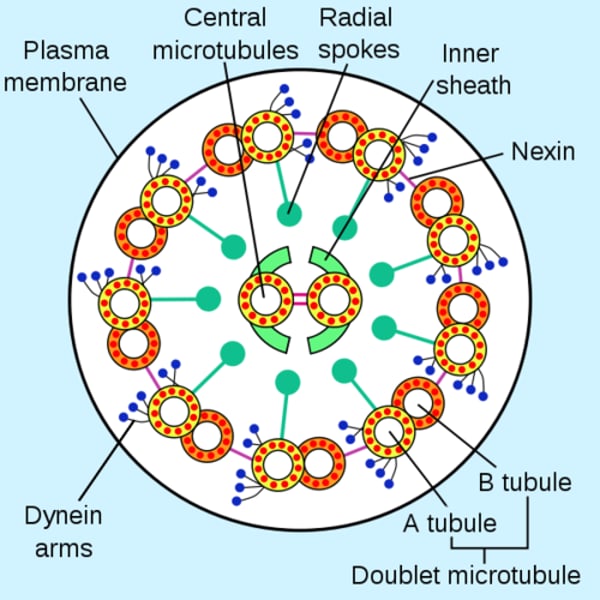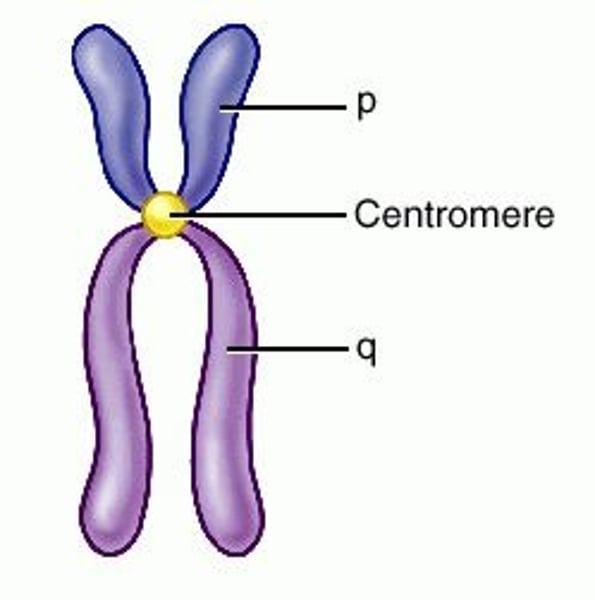CELL: THE UNIT OF LIFE
1/293
There's no tags or description
Looks like no tags are added yet.
Name | Mastery | Learn | Test | Matching | Spaced |
|---|
No study sessions yet.
294 Terms
______ was a German scientist, who observed that all plant tissues are made up of cells.
At the same time _______, British scientist studied different type of animal cells. Though he was able to observe the nuclei, but he couldn't locate cell wall, he examined & realised that cell wall forms a unique character of plants.
Mathias Schleiden
Theodore Schwann
Thickness of plasma membrane is about (according to unit membrane structure)
75 Angstrom
Who proposed modification in cell theory?
Rudolf Virchow
Omnis cellula e cellula i.e. new cells arise from pre-existing cells; this statement was given by
Rudolf Virchow
Algal cell wall is made of
Cellulose
Galactans
Mannans
Minerals (like calcium carbonate)
Detailed structure of cell membrane was studied only after the advent electron microscope in the year
1950s
An improved model of structure of cell membrane was proposed by Singer and Nicolson in ______ widely accepted as _________ model.
1972
Fluid mosaic
Mitochondria are typically _______ shaped or ______.
sausage
cylindrical
Mitochondria have _____ aqueous compartment
2
Inner mitochondrial membrane forms infoldings called
Cristae
A Golgi complex has _______ cisternae.
varied number of
endomembrane system includes
ER
Golgi body
Lysosome
Vacuole
"S" in ribosome explains
Sedimentation coefficient
Measure of density
Measure of size
Carotenoid pigments are found in
Chromoplast
Chloroplast
Cristae are found in
mitochondria
In prokaryotes like cyanobacteria, besides mesosome, other membranous extensions into cytoplasm is/are
Chromatophores (contains pigments)
Ratio of proteins and lipids respectively in plasma membrane of human erythrocytes is
52 : 40
Which types of solutes may move across plasma membrane from higher to lower concentration along concentration gradient
1) Positively charged solutes
2) Negatively charged solutes
3) Neutral solutes
4) Any of the above as per requirement
3. by simple diffusion
Membranous organelles are considered together as endomembranous system because of their
Coordinated functions
Nucleus is site of synthesis of ___ RNA.
r-RNA
Cell walls of plants consists of
Cellulose
Hemicellulose
Pectin
Proteins
Cell wall is ______ (living/non-living) and _______(permeable/semipermeable).
Non-living
Permeable
Which is common in plant and animal cell?
1) Centriole
2) Central vacuole
3) Mitochondria
4) Plastid
3
Robert Hooke is Father of _______ and is related to _______.
Cytology
cell wall
The membrane of erythrocyte has approximately _____ protein and ______ lipids.
52%
40%
Lysosomes are formed by
Golgibody + ER
Both cilia and flagella arise from the part which is STRUCTURALLY SIMILIAR to
Centriole
ER forms network of membranous tiny tubular structure localized in
Cytoplasm (entire)
Ribosome present in chloroplast
70S
Structure of ________ (cilia/centrioles) resembles a cart wheel.
Centrioles
Chromosome is composed of
DNA
RNA
Histone
Non-histone
Linking between peripheral microtubules (doublets) is known as
Interdoublet bridge

Ribosome factory of eukaryotic cell is
Nucleolus
Number of the following in the a chromosome are
1) Chromatid
2) Centromere
3) Kinetochore
4) Telomere
1) 2
2) 1
3) 2
4) 4

Smallest cell organelle is
Ribosome
"Many organelles are considered together as an endo-membrane system because their functioning is coordinated"
Statement explaining this is
Lipids synthesized in ER are modified in Golgi apparatus
Microtubular arrangement in axoneme of cilia is
9 (doublets) + 2
Ribosome of eukaryotic cytoplasm, mitochondria and plastids are
80S
70S
70S
The outer membrane is permeable to _____ (all/some) kinds of molecules
All
Enzymes for electron transfer chain are embedded in the _______(inner/outer) mitochondrial membrane.
inner
The organised beating of cilia is controlled by fluxes of ____ ion across the membrane.
Ca+2
Polysome is formed by several ribosomes attached to a single
mRNA
In germinating seeds, fatty acids are degenerated exclusively in the
1) Glyoxysomes
2)Peroxisomes
1
According to the fluid mosaic model, _________(lipids/proteins) show flip flop movement.
Lipids (rarely)
protein cannot
Chromosomes in which centromere is situated close to one end are
Acrocentric
Protoplast is a cell without
Cell wall
Mitochondria and chloroplast are
1) Semi autonomous (T/F)
2) formed by division of pre-existing organelles and they contain DNA but lack protein synthesizing machinery (T/F)
1) F
2) F
Water soluble pigments found in plant cell vacuoles are
1) Xanthophylls
2) Chlorophylls
3) Carotenoids
4) Anthocyanins
4
Shorter arm of submetacentric chromosome is called
p arm
Longer arm of a submetacentric chromosome is called
q arm
Lysosomes are formed by packaging in
Golgi apparatus
Mitochondrial matrix contains ________ DNA molecule and ribosomes.
single circular
Middle lamella is composed mainly of
Calcium pectate
Cytoskeletons are made up of
Proteinaceous filaments
acrocentric chromosome have centromere at
Almost at tip
Function of nuclear pores
Transport of RNA in both directions between the nucleus and cytoplasm
Chromatin term was given by
W. Flemming
Telomerase is an enzyme which is a
Ribonucleoprotein
Photosynthesis takes place in
1) Chloroplast
2) Peroxisome
3) Glyoxisome
1
Shape of WBCs is
Amoeboid
Shape of mesophyll cells is
Round and oval
Cell whose shape is branched and long
Nerve cell
Arrange in order of decreasing size
1) typical bacteria
2) PPLO
3) viruses
4) typical eukaryotic cell
4 > 1 > 2 > 3
(10-20um) > (1-2um) > (0.1um) > (0.002-0.2um)
Robert Hooke first
observed cork cells
Anton von Leeuwenhoek first
Saw and described a living cell
Eukaryotic and prokaryotic flagella are structurally ______ (different/similar).
Different
Similarity between chloroplast and mitochondria
Both Semiautonomous
Contain ds circular DNA
double membrane bound
Element required to maintain structure of ribosome
Mg+2
Plastids are found in
All plant cells and euglenoids
Cell organelle formed by Golgi apparatus
Lysosome
Vacuole
_______ and _______ form basal body of cilia and flagella to facilitate locomotion.
Centrosome
Centriole
___________ plays a major role in hereditary.
Nucleus
Lysosomes contains enzymes that digests ALL types of macromolecules (T/F)
T
The invention of microscope revealed all the structural details of the cell (T/F)
F. Improvement of microscope leading to electron microscope revealed all the structural details of the cell
In ______, Matthias Schleiden, a German botanist, examined a large number of plants
1) 1838
2) 1883
3) 1839
4) 1855
1
Matthias Schleiden observed that ____(all/a few) plants are composed of different kinds of cells which form the tissues of plant
ALL
Theodore Schwann in _____, a ______ Zoologist, studied different types of animal cells
1) 1838, German
2) 1883, British
3) 1839, British
4) 1855, British
3
Theodore Schwann reported that cells had a _____(thick/thin) _____(outer/inner) layer which is today known as "plasma membrane"
Thin
Outer
________ based on his studies on plant tissues concluded that presence of cell wall is a unique characters of plant cells.
1) Rudolf Virchow
2) Theodore Schwann
3) Matthias Schleiden
4) Anton Von Leeuwenhoek
2
______ proposed the hypothesis that bodies of animals and plants are composed of cells and products of cell
1) Rudolf Virchow
2) Theodore Schwann
3) Matthias Schleiden
4) Anton Von Leeuwenhoek
2
Schwann proposed the hypothesis that bodies of animals are composed of cells and products of cells (T/F)
F. of ANIMALS AND PLANTS are composed of cells and products of cells
______ & ______formulated the cell theory
1) Rudolf Virchow, Theodore Schwann
2) Theodore Schwann, Matthias Schleiden
3) Matthias Schleiden, Anton Von Leeuwenhoek
4) Rudolf Virchow, Matthias Schleiden
2
Cell theory formulated by Schwann & Schleiden explained how new cells were formed (T/F).
F
The cells of the human cheek have an outer membrane as the _______ structure of cell
1) Limiting
2) Delimiting
3) Flexible
4) Rigid
2
In both prokaryotic and eukaryotic cells, a ______(fluid/semi-fluid) membrane called cytoplasm occupies the volume of cell .
Semi-fluid
Various chemical reactions occur in _____ to keep the cell in the "living state"
1) Cytoplasm
2) ER
3) Nucleus
4) Nucleolus
1
Prokaryotic cell contains membrane bound organelles (T/F)
F.
Ribosomes _____(are/are not) membrane bound organelles
are not
Ribosomes are present in both prokaryotic and eukaryotic cells (T/F)
T
Ribosomes are present within
1) Chloroplast, RER
2) Chloroplast, mitochondria
3) Chloroplast, mitochondria, RER
4) Mitochondria, RER
3
Centrosome ______(is/is not) membrane bound
Is not
Mycoplasmas are ____ in length
1) 0.3 μm
2) 0.2 μm
3) 3 μm
4) 5 μm
1
Length of bacteria
1) 2-3 μm
2) 3-4 μm
3) 3-5 μm
4) 4-6 μm
3
Human RBC is 7 μm in
1) Length
2) Width
3) Radium
4) Diameter
4
Longest cells are
1) Nerve cells
2) Tracheids
1
Shape of cell may vary with
1) number of mitochondria present in them
2) Amount of cytoplasm
3) their function
4) arrangement on ER
3
Prokaryotic cells do not vary in shape and size (T/F)
F. They greatly vary.
The ______ of prokaryotic cell is fundamentally similar.
1) function
2) location
3) behaviour
4) organisation
4
All prokaryotic cells have a cell wall (T/F)
F. Mycoplasma don't
Genomic DNA of prokaryotic cells is
1) single-chromosome, circular
2) single-chromosomes, linear
3) double-chromosome, circular
4) double-chromosome, linear
1